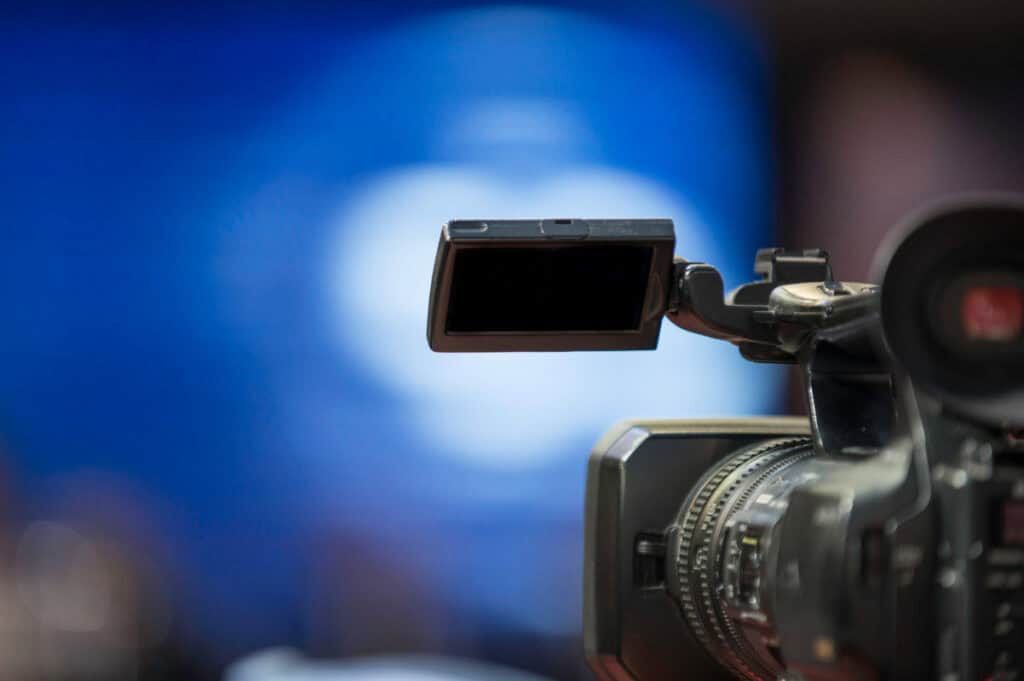The invention of the camera long before the 17th century has marked incredible performance across different industries. The need to make video content before a camera arises nearly every day, and most of the time, people don’t know when they’ll find themselves in the situation.
Table of Contents
Are you fully prepared to speak in front of a video camera if you happen to? How can you speak professionally in a video? When you blend these tips and add a few more from videos made by award-winning people in your profession, you’ll be miles ahead in the game.
Don’t forget to continue practicing even after one successful project. Even better, watching demonstrations by a video expert can give you more insights. Here are some tips to guide you on how to speak professionally in a video and build a positive impression for your brand and business.

Practice with a Corporate Video
A corporate video can give you better guidance about speaking before the camera, which you can hardly find in entertainment vlogs and content. They are what you should focus on when seeking insights.
If you know you have a project coming up, you can perfect your work by watching several videos. Take the time to practice what you have learned and review your performance before D-Day. After three to four trials, you will have learned and corrected some common mistakes people make.

Put a Smiley Face
While no specific mood is required to make videos before cameras, it’s a good idea to smile occasionally across the film. A smile makes you look lively and leaves a positive impression, especially when addressing a particular issue.
It would be best to refrain from smiling throughout the video, as it may seem monotonous and awkward. After a few paragraphs, the instances should be reasonable. Crackling a few jokes is a great way to introduce a smile to everyone in the audience.
Be Yourself
A huge mistake many people make when talking before a camera is trying to imitate someone they may have seen in the media or know. In this case, you will only have to introduce body gestures, tones, and words outside of the room if you do this.
It is still possible to pass the message, but the impression might turn out better than you expected. The simplest thing you can do is portray your experience, personality, and confidence and say what you have.
Speak Professionally in a Video – Write Your Script Down
Writing down scripts for a video topic is often criticized. This becomes problematic when you rely solely on reading to your audience without knowing more information about what you have written.
When you memorize, you can easily struggle to balance what you have in mind and what is on the paper. On the other hand, understanding the message makes you bolder, more eloquent, and clearer since you know it all. You’ll be ready for questions.
Look at the Camera
Imagine you are watching a video, and the person stares in a direction far from yours, which is unprofessional, right? Eye contact holds so much power in your speech results. It gives it a personal touch and makes you more audible.
Look straight at the camera’s lens, not the other side, and watch fantastic videos. Practicing with an expert videographer is ideal, as they can help you know how far you can go with the lens frame.
Address a Singular Person and Not a Group
You can agree that, in many cases, people address their audience as a group and not as a person when speaking before a camera.
Professionally, that’s not the right way! Even if there is a chance that a group of people will watch the video together, it’s essential to present your message as if you’re focusing on a single person.
This evokes participation and fuels a debate in the comment section. Addressing them specifically also brings a sense of belonging to the channel, brand, or community.
Be Careful with the Gestures
Body language is crucial to communication; you must be careful when portraying a message through a lens. It would help if you made a gesture or two in the video to talk and talk.
These gestures are mainly shown through your facial expressions and hand movements as you speak. They help emphasize something, making it more understandable to the audience. Body language should match your speech to avoid misjudgments.
Dress for the Occasion
When you’re talking before a camera, the choice of dress influences how the audience feels about the message. Not only that, but it may also affect your confidence while speaking and after the presentation. To level things up, dressing in comfortable and appropriate clothes is advisable.
For instance, if the project occurs outside and in a cold climate, dress warmly. Otherwise, you may have to hold yourself together throughout the video. The garments should be well-fitting to avoid the need to correct endless dispositions during a speech.
Most importantly, it’s advisable not to overdo accessories (earrings, necklaces, or bangles) since they may disrupt the video theme or focus.

Invest in Great Video Equipment
Investing in high-end video equipment can make a real difference in the quality of your videos. Strong lighting, clear sound, and a camera that captures fine details are all keys to professional content. If your video or sound quality is bad, it might draw attention away from your main point.
Make sure to use the right kind of lights, like softbox lights to soften sharp shadows and light up your face well. It’s also very helpful to have an excellent microphone for easy-to-understand sound.
Plus, recording with a clear—picture camera—be it a DSLR, mirrorless, or advanced webcam—will help ensure your video looks crisp and skillful. Check and tweak your gear before recording to get the best outcome.
Edit Your Videos Like a Pro
Editing is as crucial as filming. When done well, editing can improve how your video flows, clarity, and how much it holds viewers’ attention. It lets you cut out parts you don’t need, add smooth transitions and graphics, and fix filming errors.
Using video editing programs like Adobe Premiere Pro, Final Cut Pro, or free options like DaVinci Resolve can help you create sleek videos. Learn the basics of editing — cutting scenes short, overlaying text, fine-tuning sound levels, and weaving in some background music.
Think about adding extra shots, known as B-roll footage; they enhance your main shots by giving more context. Putting effort into editing your videos like a pro will improve the result.



